Blog
Helpful Information About Potential Welding Careers & Trucking Jobs
-

Learn What Industries Offer Opportunities for a Successful Welding Career
Welding is a critical skill that supports a wide range of industries, from construction and manufacturing to aerospace and energy. Without skilled welders, essential structures, machinery, and transportation systems wouldn’t be possible. As industries continue to grow and evolve, the demand for trained welders remains strong, offering countless career opportunities for those with the right skills. In this blog, we’ll explore the industries that rely on welders, highlighting the vital role they play and the exciting career paths available in this essential trade.Why Welding Is an Essential Skill Across Industries
Welding jobs are a fundamental trade that serves as the backbone of countless industries, making it one of the most versatile and in-demand skills in the workforce. From towering skyscrapers and massive bridges to intricate aerospace components and high-performance vehicles, welding is responsible for creating and maintaining the structures and equipment that keep the world moving. Beyond construction and manufacturing, welders play a crucial role in emerging industries like renewable energy and advanced technology, ensuring innovation and progress continue. With advancements in automation and specialized welding techniques, the need for skilled welders is only growing, offering job security and career advancement opportunities across a variety of fields.Industries That Rely on Welders
1. Construction and Infrastructure
The construction industry depends heavily on welders to create and maintain buildings, bridges, and other essential infrastructure. Welders work on steel frameworks, reinforce concrete structures, and ensure the stability of high-rise buildings. Public infrastructure, such as highways, tunnels, and pipelines, also requires skilled welders to maintain and repair metal components. As cities expand and new projects develop, welders remain at the forefront of this industry.2. Manufacturing and Fabrication
Manufacturing is one of the largest industries for welders, offering employment in factories that produce everything from household appliances to industrial machinery. Welders work with metal components to assemble products, reinforce materials, and ensure durability. Many modern manufacturing facilities use automated welding processes, but skilled welders are still needed to oversee production, inspect welds, and handle intricate tasks that machines cannot perform.3. Automotive and Transportation
Welders play a significant role in the automotive industry, helping to build and repair cars, trucks, and even public transportation systems like buses and trains. Every vehicle contains welded components that contribute to its safety and efficiency. Welders also work on custom automotive projects, such as race cars and specialty vehicles, creating high-performance frames and exhaust systems. With the rise of electric and autonomous vehicles, the demand for specialized welding skills in this field is increasing.4. Aerospace and Aviation
Precision welding is crucial in the aerospace industry, where aircraft and spacecraft require strong, lightweight, and durable materials. Aerospace welders work on airplane fuselages, jet engines, and satellite components, using advanced techniques like TIG welding and laser welding to ensure structural integrity. The high standards and safety regulations in aerospace welding make this a challenging but rewarding career path.5. Shipbuilding and Maritime Industry
The maritime industry depends on welders to build and repair ships, submarines, and offshore drilling platforms. These structures must withstand extreme weather conditions and the constant wear of saltwater exposure. Some welders in this field specialize in underwater welding, a highly skilled and high-paying profession that involves working in submerged environments to repair ship hulls, pipelines, and offshore structures.6. Energy and Power Generation
Welding is essential in the energy sector, helping to construct and maintain pipelines, power plants, and renewable energy systems. In the oil and gas industry, pipeline welders work in challenging environments to ensure the safe transportation of fuel. Meanwhile, the renewable energy sector relies on welders to build wind turbine towers, solar panel structures, and hydroelectric power facilities. As the world shifts toward sustainable energy, welders will continue to play a crucial role in shaping the future of power generation.7. Agriculture and Heavy Equipment
Farms and agricultural businesses rely on welders to repair and maintain heavy machinery, including tractors, plows, and irrigation systems. Welding is used to build sturdy equipment that can endure rough conditions and heavy use. Skilled welders in this industry ensure that farmers and construction workers have the durable tools they need to operate efficiently.8. Military and Defense
The military relies on welders to build and maintain vehicles, ships, aircraft, and infrastructure used in national defense. Military welders may work on armored vehicles, aircraft carriers, or even weapons systems, ensuring they meet strict durability and performance standards. Some welders in this industry work directly for government agencies, while others are employed by defense contractors.How to Get Started in Welding for These Industries
For those interested in a welding career, proper training and certifications are essential. Many industries require specialized welding skills, so gaining hands-on experience and obtaining certifications from organizations can open doors to high-paying opportunities. Enrolling in a welding training program, such as the one offered at Advanced Career Institute, can help aspiring welders build a strong foundation and gain the technical knowledge needed to succeed in various industries.Why Welding Is a Strong Career Choice
Welding jobs offer security, career advancement, and excellent earning potential. As industries continue to expand and evolve, the demand for skilled welders remains steady. Whether working on massive infrastructure projects, high-tech aerospace components, or cutting-edge renewable energy systems, welders have the opportunity to build a fulfilling career in a field that keeps the world running. From construction and manufacturing to aerospace and energy, skilled welders are needed in nearly every industry. Welding jobs provide stability, diverse career paths, and opportunities for professional growth. If you're considering a hands-on career with strong earning potential, welding could be the perfect choice for you.Start your welding journey today with Advanced Career Institute and gain the skills needed to work in these essential industries!
-
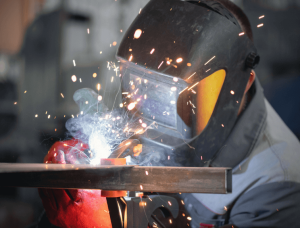
How to Become a More Efficient Welder
Whether you’re an experienced welder or just graduated from welding training, there are standard welding practices every welder should follow. Along with this, welders should be aware of common mistakes across the industry. Read more about some of the most common welding mistakes within the industry and how you can avoid them in the future.Lack of Preparation
Lack of preparation in any industry is unprofessional and should not be taken lightly when prepping to weld. Thoroughly preparing the metal you will be welding to remove any paint, rust, dirt, and other foreign substances is vital in ensuring the surfaces are clean. Failure to do so could lead to a weak weld on the pieces of metal. Cleaning isn’t the only major thing you should prep for before welding. Knowing the type of metal and its measurements is important in knowing how to weld the pieces together and if they will need multiple passes. Knowing the measurements of the specific metal types you are welding and adequately cleaning them will help you better prepare before welding. This knowledge will also help you determine a plan of action for how to execute the welds. Many of the other common welding mistakes stem from a lack of preparation.Safety Precautions
Safety is the top priority in welding and almost every occupation today. Working with flammable gases, sharp metal, debris, and a torch daily presents welders with a lot of liability. Making sure you know the proper safety precautions before diving into a weld can prevent accidents and even be lifesaving. To begin with, some of the most common precautions are personal protective equipment (PPE) pieces. These include work boots (preferably steel-toe), hearing protection, welding shield/helmet, and safety glasses. Ensuring you have the basic safety requirements is always an easy place to start when taking proper safety precautions. Your preparation before welding will help with safety too! Since you have prepared for what you are welding, you will know the appropriate types of welds needed for the job. Preparation goes a lot farther than just knowing what you will be welding.Wire and Electrode Selection
Before welding, it is essential to choose the correct wiring and electrodes needed for the job. This is regardless of the type of welding you will be doing (the three most popular are stick, flux-core, and MIG). Electrodes and wires are suited for different welding applications and need specific types to be effective. Knowing which types work with the different welds you are performing can save you from re-doing any wrong ones.Interpass and Preheat Temperatures
Like many common appliances and machinery, welding machines must be preheated before using them. Failure to preheat your machine and the metal area surrounding the weld to the proper temperature before conducting the weld can lead to problems and create more work for yourself. Proper preheating leads to fewer cracks and helps prevent future issues with the weld. Choosing the correct interpass temperature will help to solidify and correctly conduct your weld between the metals. Knowing what temperature is needed for the thickness and type of metal you are welding will help your weld and your preparation. Having correct preheat and interpass temperatures can save you from having to re-do a weld and other headaches that may result. Proper welding training can be a huge step in becoming a successful welder and avoiding these common welding mistakes. You will learn the proper preparation and techniques to weld various metals correctly. Qualified students can apply for tuition assistance programs and work with our job placement team to find openings with local and national employers! Get started in your welding career today! Call our admissions team at 866-951-4821 to learn more about enrolling with ACI! -
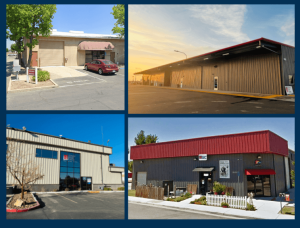
Which campus works for you?
Advanced Career Institute has been in business for over 30 years. We have grown to five campuses that provide students in California and Nevada with the best training as they work toward getting their CDLs and welding certifications. Learn about each of our campuses and find the perfect one for your needs.Visalia CDL Training and Welding Training
The ACI Visalia campus is our oldest campus, having been open since 1993. However, it has recently moved to a new state-of-the-art facility in 2022. The new Visalia campus is located at 1243 N Clancy St, Visalia, CA 9329, and offers students both CDL and welding training courses. The complete list of the courses provided at Visalia is Class A CDL training, Advanced Class A CDL training, CDL refresher training, Agricultural Transportation training, and advanced welding training. The new Visalia campus provides students access to the four-acre truck driving yard and our 5,000 sq. ft. welding lab.Fresno CDL and Welding Training
Our Fresno campus, located at 2953 S. East Avenue, Fresno, California 93725, was the second campus we opened in July 2000. When we opened our Fresno campus, welding also joined our programs list. As of 2022, the programs offered at our Fresno campus are Class A CDL training, Advanced Class A CDL training, Agricultural Transportation training, and Advanced Welding training.Merced CDL Training
Due to increased student demand, we opened our Merced campus in March of 2015. Our Merced campus is at 1741 Ashby Rd, Suite B, Merced, CA 95348. The Merced campus offers Class A CDL training, Advanced Class A CDL training, CDL refresher training, and Agricultural Transportation training. Merced helps us reach all students in the Valley and give them the best Commercial truck driver training possible.Bakersfield CDL and Welding Training
ACI Bakersfield is one of three campuses offering both CDL training and welding courses. Our Bakersfield campus is located at 2925 Mosasco St., Unit B, Bakersfield, CA 93312, and has been open since 2018. Our CDL training programs include our Class A CDL training, Agriculture Transportation training, Advanced Class A CDL training, and a CDL refresher course. Our Bakersfield campus also offers ACI’s advanced welding training, our 38-week welding certification course.Las Vegas CDL Training
In 2020 we opened the ACI Las Vegas campus using our over 30 years of knowledge in the trucking industry to provide the best training in the North Las Vegas area for our students. We opened our Las Vegas campus at 4020 E Lone Mountain Rd Suite 100 North Las Vegas, NV 89081; it became our fifth campus. The Las Vegas campus offers Class A CDL training, Advanced Class A CDL training, CDL refresher training, and Agricultural Transportation training. Students that attend our Las Vegas will have access to our four-acre paved training yard and new upgraded classrooms.Come to ACI to be trained by the best staff in California! Contact us today to reserve your seat at one of our campuses.
-
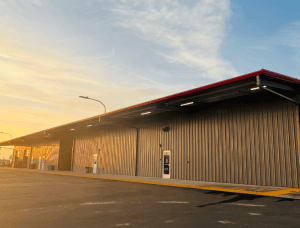
Welcome to our new California Welding and CDL Training Facility
Big news at ACI! We have officially moved into our newly built Visalia campus! Our new campus is located at 1243 N Clancy St. Visalia, CA 93291. Our upgraded facility has improved CDL training and welding facilities, allowing students to further their careers in a new state-of-the-art learning environment.CDL Training at our Visalia, CA Campus
Our CDL training facilities have grown! Our 4-acre training yard is freshly paved and painted. Our students have plenty of room to practice all backing maneuvers and get comfortable operating a commercial vehicle. Our new driving range allows 7 to 8 trucks on the yard at once, with multiple students simultaneously practicing different parts of training. ACI’s new Visalia campus has dedicated spaces to practice pre-trip inspections, different driving techniques, and classrooms for students to study. These classrooms have been upgraded with the latest education technologies to allow students a modern learning environment. We have also added a new covered, outdoor lunch area when students are ready for a much-deserved break. We are ecstatic about the opening of our new campus, and can now train anywhere between 75 and 85 students at any given time.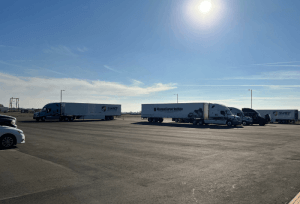

Welding Training at ACI’s Visalia Campus
Students are given a warm welcome to the brand-new welding lab at our Visalia Campus. The state-of-the-art welding lab is 5,000 sq ft. Welding students have dedicated areas to practice the various welding techniques required to receive their American Welding Society certification. Our new space has increased ventilation and private welding bays for each student to focus individually on mastering their craft. Same as our CDL students, welding students also have access to our upgraded classrooms and have a dedicated space to learn about blueprint reading, construction math, and site/shop safety. With ACI’s new welding lab and our four-class schedules, there can be 100 welding students at our facility on any given day!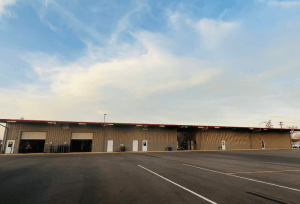
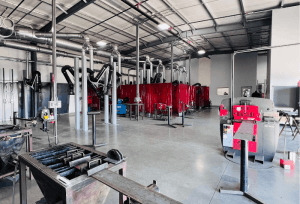
Student-centered Improvements
Students' success is important to us at ACI, and our new Visalia campus has our student's success at its core. Students can expect an improved experience from start to finish. We have upgraded our front office spaces so that new and current students can quickly and easily find the help they need. Our admissions staff have private offices to help you find your perfect training path and our job placement team has a dedicated space to help you find the perfect job after graduation from Advanced Career Institute. Student lounges and a spacious kitchen area give students a space to relax and feel at home while training at ACI.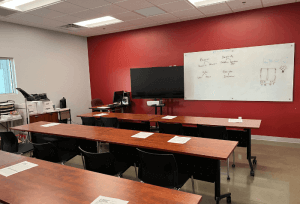
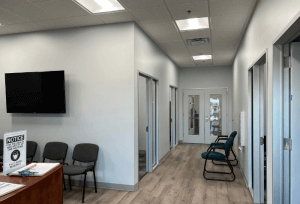 Are you ready to experience all that our new Visalia campus can offer? If so, contact us today at 877-649-9614 to get started!
Are you ready to experience all that our new Visalia campus can offer? If so, contact us today at 877-649-9614 to get started!
-

Show Your Appreciation For Our Road Heroes!
For many, the holiday season drums up memories of large food spreads, festive decorations adorning businesses and homes alike, and unwrapping gifts of all sizes. But have you ever stopped to think about how those items arrived in your hands just in time for your special celebration? Professional truck drivers play a large part in that process. They transport goods from turkeys to holiday trees and everything in between. These men and women sacrifice spending this special time with their loved ones to ensure our gatherings go off without a hitch. Now more than ever, it's important to show them how thankful we are for their service. Keep reading to see different ways you can thank a professional driver during this time of giving!Thank A Driver with a Home Cooked Meal
Drivers have limited home-cooked meal options while on the road, meaning they often eat typical truck stop snacks or fast-food items. To show appreciation for the hard work they are providing this season, you can opt to share your own turkey spread! Alternatively, there are many organizations, such as Meals for 18 Wheels, where you can volunteer to deliver ready-made meals to drivers. Whichever you choose may seem like a small sentiment, but truck drivers will for sure be very grateful!Show Thanks by Picking Up the Check
If your celebrations happen at a restaurant or diner, check if any drivers are also enjoying a meal. If so, you can offer to cover their bill. You could even invite them to join in your festivities, as many of them are away from their own celebrations and traditions. Truck drivers can provide great company and interesting conversations, as they encounter something new every day that they're driving across the country. And to think, all of that could begin with a small kind gesture of gratitude!Spread Holiday Cheer with Thank-You Themed Goody Bags
A great way to get the whole family involved is to set up a goody bag creation station to pass out to drivers you encounter throughout the season. The bags can be filled with travel-size essential items, grab-and-go snacks, or holiday-themed décor they can use to spruce up their trucks. You might also want to include a themed greeting card that everyone can sign. The best part – these items can be purchased at your local dollar store! Once all the bags are filled, make sure to keep them somewhere that can be easily accessed to hand out, such as your car. This inexpensive gift idea can have the biggest impact on a driver’s day!Post on Social Media Using the #ThankATrucker Hashtag
Social media has become a very popular way for drivers to keep in touch with their family and friends. This gives you the perfect opportunity to show your thankfulness to drivers, and best of all – it's free to do! Before you post, make sure to include the hashtag #ThankATrucker so your message can reach even more drivers than you thought possible! You can also repost messages from others who are using the hashtag to spread their positive sentiments. Lastly, you can ask your friends or followers to also create a caption with the hashtag and help spread good messages to all drivers!Truck Drivers Thank Advanced Career Institute
While everyone is thanking our heroes of the road, truck drivers are also showing their gratitude to those who helped them get where they are today. Advanced Career Institute has received many heartfelt messages of thanks and appreciation from our graduates who underwent our CDL training program and have gone on to create successful and lucrative driving careers with our trucking partners. Many graduates share their stories with us online, but some make sure to stop by their campus in person. Drivers also make sure to stop by our Job Placement program offices to pass along their gratitude to those who helped get the ball rolling toward their new careers.Let ACI help you begin your new driving career! Fill out the form on this page or give us a call at 866-218-7968 to get your spot reserved in our next class!
-
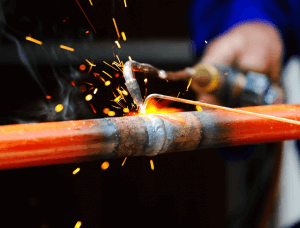
Is Welding the Right Career for You?
Welding is exciting. There’s nothing quite as exhilarating as powering on your torch and watching the sparks fly ablaze while you meld together whatever material is in front of you. Eventually, the individual pieces of metal you began with are now a single product, conceived by the influence of your own hands. It’s surely a satisfying process to complete; there’s no wonder why many seek to turn the craft into a professional career. With proper training, anyone can pick up the skills needed to do just that. But how do you know if the trade is the right fit for you? What makes a good welder? Here are a few insights into what it takes to find success in welding.Welding Might Be the Career for you if…
- You prefer physical work over sitting at a desk: Welding is a hands-on craft that is very much about physical labor. There’s a good chance you’ll never get to sit back in a cushy desk chair while on the job.
- You don’t want to attend college or university but still want a fulfilling career: A 4-year college degree isn't usually a requirement for finding success in welding. Additionally, welding certifications tend to be more affordable and quicker to complete. You can finish ACI’s Advanced Welding Course in just 38 weeks!
- Job sustainability is important to you: Welding jobs are always in demand. In fact, the manufacturing of more than 50% of U.S. products involves welding. This line of work is unlikely to go away any time soon, so professionals can remain confident in their ability to find their next project.
- An outdoor work environment appeals to you: Many jobs will require working in outdoor conditions. Hence, you should be sure you can handle the sun and fresh air all day if you’re considering this profession.
- You are interested in different industries: There are various opportunities for those who complete their welding training. A few industries you could work in include Construction, Automotive, Electric, Aerospace, Agriculture, Manufacturing, and many others.
- You like to travel: Welders are sought after all around the world. Furthermore, welding practices stay fairly consistent across borders, so travel enthusiasts can easily take on stints while on the go.
- You don’t mind working for long periods: Oftentimes, projects can keep you on your feet for hours at a time. Both mental and physical endurance is important for welders to perform at their best.
Characteristics of a Successful Welder
Anyone can become a professional welder with the right training and work ethic, but some traits can help aspiring tradespeople get farther ahead in their field:- Detail-oriented
- Self-motivated
- Knowledgeable in a variety of skills
- Has a solid understanding of the tools and equipment used on the job
- Keeps up to date on the latest industry news
- Puts safety first
- Capable of problem-solving
- Knows how to read blueprints and understands the role of welding in a project
- Understands the math and science behind their craft
- Has good interpersonal skills
If you are ready to start your welding career, contact us today!

